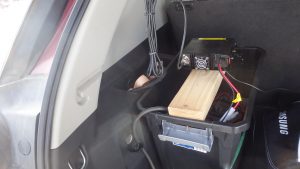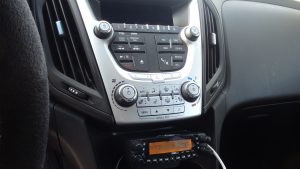Using Cross Band Repeat While Backpacking
Cross band repeat is a nice feature that many ham radios have– it gives the ability to transmit on one band to a more powerful radio and then, in turn, send that transmission from the more powerful radio on another band. Cross band repeat is typically used for a handheld radio to communicate with a more powerful radio, and to expand the communication range of that handheld radio. This is important when backpacking- if you can transmit using 5-8 watts to your vehicle at the trailhead, the radio in your vehicle can easily re-transmit the same message at 50-75 watts. You’ll need to do your homework with this solution, but it will easily enable you to communicate while backpacking.
The first consideration is your vehicle radio and antenna. You will want a radio that is capable of transmitting at least 50 watts, and an antenna with as much gain as possible. With higher gain antennas, there is a trade off– size. The larger an antenna is, the better it typically performs. As for your radio, make sure that it supports cross band repeat. Don’t assume that a $300 radio will have that feature. For those on a tight budget, the TYT TH-9800 is a good choice, offering 50 watts as well as the coveted cross band repeat function, for $200. Now, you’re ready to install your radio.

My setup, a TYT-TH9800 radio mounted above a redundant battery.
There are as many radio installation options, as there are radios. Personally, I like the idea of an isolated battery for the radio, which is why mine resides in the back of my vehicle, and the remote head wire runs up to the dash. This gives me the ability to easily turn the radio off and on, while still providing the safety of an isolated battery. If you choose to directly wire the radio to your main vehicle’s battery, be aware that after several hours of operation, you may not be able to start your vehicle– which is a bummer, to say the least.
Once you’ve installed your radio and antenna, you’re ready to try out cross band repeat. Your radio will have two frequency knobs– turn one to a local repeater or unused frequency, and turn the other to an open frequency. This clear frequency must be on a different band than the repeater you want to contact, since this is how cross band repeaters operate. They take an input in the 30cm band, and transmit to the 2-meter band, or vice-versa. Once you’ve dialed in both frequencies, press the menu button on your radio, and activate the cross band repeat function. Typically, the radio is now unable to be used locally, but you should be able to happily transmit via your handheld radio to the repeater or other frequency.
A word of caution with cross band repeat is that repeater owners do not appreciate random ham users connecting a cross band repeat radio to their repeater. It can sometimes cause issues with their repeater, such as leaving the repeater stuck on transmit. In any event, it’s expected that if you plan on cross band repeating to someone else’s repeater, you should get permission to do so first. It’s the right thing to do, and it could very well prevent a fine from the FCC.

